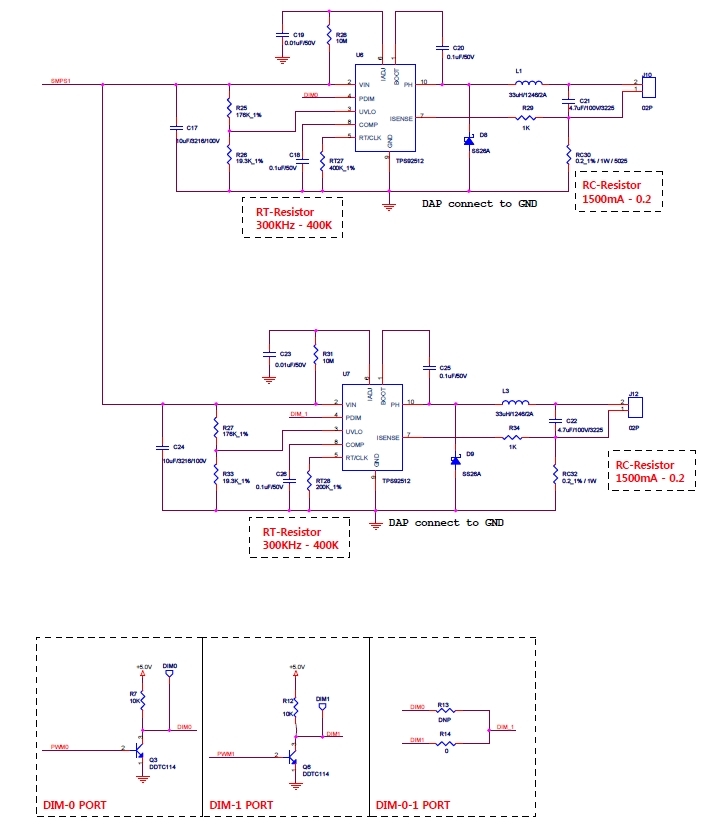Hello,
- Direction : MCU(PWM Generate) -> PWM0 -> DIM0 -> TPS92512(PDIM) -> J10(Output to LED)
[Case 1]
- Input to device from SMPS : 36V
- LED : 12(Serial) * 12(Parallel)
LED flickering upon PWM duty 60% ~ 0%
[Case 2]
- Input to device from SMPS : 45V
- LED : 15(Serial) * 12(Parallel)
No LED flickering
Any component change can help [Case 1] problem?
Regards,
Jay





